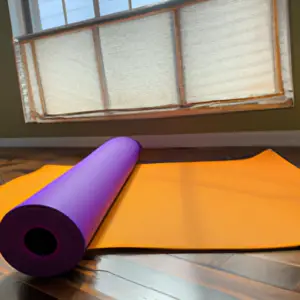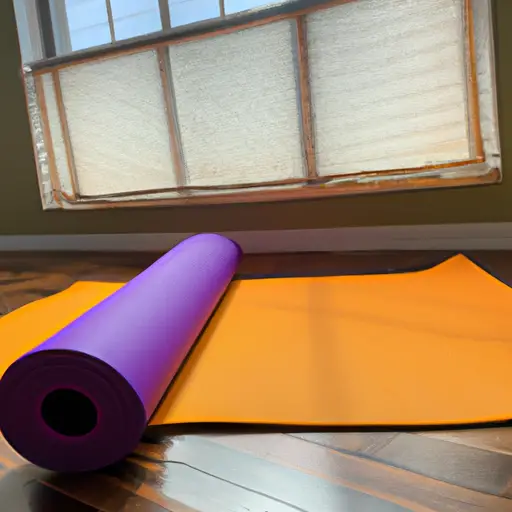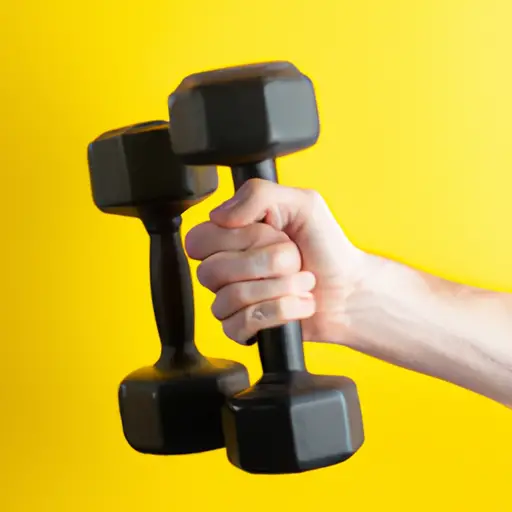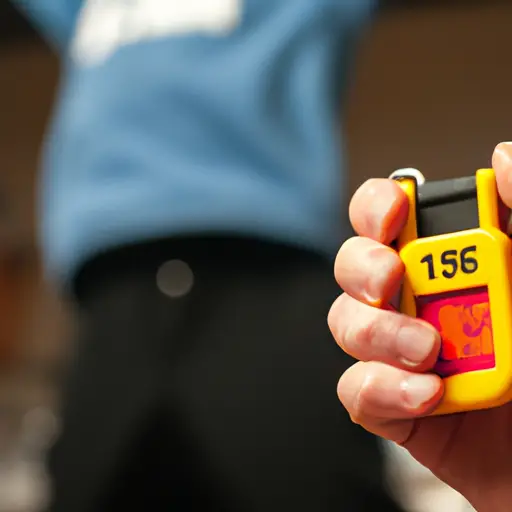Equipping Your Home Yoga Studio
Get Your Zen On: Creating a Home Yoga Studio
Hey there! Are you ready to take your yoga practice to the next level? There’s nothing quite like the peace and tranquility that comes from practicing yoga in the comfort of your own home. So, let’s get started on creating your very own home yoga studio!
First things first, let’s define what yoga is. Yoga is an ancient practice that originated in India over 5,000 years ago. It combines physical postures, breathing techniques, and meditation to create a holistic mind-body experience. The benefits of practicing yoga are countless, from improving flexibility and strength to reducing stress and anxiety.
Now, onto the essentials for a home yoga studio. You’ll need a yoga mat, of course, to provide a cushioned surface for your practice. Blocks, straps, and blankets or bolsters are also must-haves for modifying poses and supporting your body. And don’t forget a meditation cushion for your quiet reflections!
To really create a zen environment, you’ll need to consider lighting, music, incense, and artwork. Soft lighting can help you relax and focus, while calming music can enhance your practice. Incense can stimulate your senses and create a pleasant aroma. And, finally, artwork like mandalas or statues can provide spiritual inspiration and visual interest in your studio.

Now that you’ve got the ingredients for a home yoga studio, it’s time to get creative and make it your own. Practice makes perfect, and with your very own yoga space, practicing regularly will be that much easier.
The Must-Have Tools for Your At-Home Yoga Sanctuary
As a self-proclaimed yogi, there’s no better way to embrace your inner calm and alignment other than establishing your very own yoga studio right at home. Before we roll out our mat and start our practice, let’s make sure we have the necessary gear to enhance our practice and make our yoga sanctuary as relaxing as possible.
Get Yourself a Quality Yoga Mat
The most fundamental tool for your yoga practice is undoubtedly your yoga mat. A good yoga mat provides you with the right traction and cushioning as you move through your poses while protecting your joints and ensuring stability. When choosing a mat, consider the stickiness and thickness to ensure it gives you a firm grip during poses like downward dog while making you feel comfortable and supported while performing seated postures.
Bring in the Blocks for Stability and Balance
Whether you are a beginner or an experienced yogi, yoga blocks are an excellent addition to your home studio. Blocks are designed to provide balance and stability to help you achieve proper alignment and form while helping to relieve any pressure that might occur, particularly for those perfecting more challenging poses.
Invest in Straps for Better Flexibility
Yoga straps are a great tool to enhance flexibility as they help you stay in certain positions longer and increase the range of motion in some poses. They can also be used as a tool to help you pull your limbs gently into place and help you to achieve more challenging poses.
Get Comfy with a Blanket or Bolster
A blanket or bolster can help you through different poses where you may need to provide your body with some extra support. It’s also helpful when taking restorative yoga classes where you rest in certain positions for extended periods, giving you extra comfort as you meditate and relax.
Meditation Cushion to Help You Relax and Stay Focused
The meditation cushion is the perfect tool when you need extra support while meditating. It helps improve your posture, keeps you from slumping, and helps you to stay focused and free from distractions.
Other Accessories to Enhance Your Practice
Additional props that can give you more support during your practice are knee pads, eye pillows, sandbags, and foam rollers. While not necessary, these accessories can help you achieve optimal alignment and make your practice more comfortable.
Get in the Zen Zone: How to Create a Peaceful Home Yoga Studio
Now that I have all the essential gear, I need to focus on creating a calming ambiance that will encourage me to practice yoga at home regularly. Here are some tips I’ve learned to create a Zen environment:
Lighting:
When it comes to lighting, I prefer natural light, so I place my yoga mat by a window. However, when it’s not possible, I opt for soft lighting, like candles or dimming lamps. This helps to create a cozy and calming atmosphere, especially when doing relaxing poses or meditation.
Music:
I’m a huge believer in the power of music, and I love using it as a tool to enhance my yoga practice. I like to play instrumental music with soothing sounds like ocean waves or birds chirping to control my breath and focus my mind on the present moment. A lot of yoga music is available on YouTube, and it’s free!
Incense:
Incorporating aromatherapy can be a real mood-changer during yoga practice. I have a few incense sticks and oils to help create a calming aroma, and these work great when paired with smooth music and dim lighting. It’s good to remember that some people do not like the smell of incense, so consult with people you live with before using them.
Artwork:
I like to decorate my yoga space with images that inspire me, help me relax, and connect with nature. I’m a big fan of paintings of peaceful scenery like mountains or seashores. You can even have a vision board with photos of goals related to wellness, yoga, and meditation.
By incorporating all these elements, I know I have created an environment conducive to relaxation, meditation, and rejuvenation. With this, I can reap the benefits of a consistent yoga practice at home!
4. The Final Stretch: Wrapping Up Your Home Yoga Studio
Well, folks, that’s a wrap! It’s time to take a deep breath in and out, and pat yourselves on the back for investing time and effort into creating a beautiful home yoga studio. Remember that creating a sacred space for yourself to practice yoga can be incredibly beneficial for your mental and physical health.
Before you go, let’s quickly recap what we’ve learned today. We started by defining what yoga is and discussing its many benefits. Then, we explored the essential items you’ll need to create a functional and comfortable home studio, such as a yoga mat, blocks, and straps. Next, we talked about ways to make your space feel more serene and inviting through lighting, music, and artwork.
But the most important takeaway from today’s discussion is that your home yoga studio should be whatever you want it to be. There are no hard and fast rules when it comes to designing a space that works for you. The most important thing is that you feel comfortable, safe, and inspired to practice yoga every day.
Finally, I want to remind you that yoga is a journey, not a destination. So don’t be afraid to experiment with different poses, sequences, and styles of yoga to find what works best for you. And most importantly, don’t forget to have fun! Namaste.
Yoga Studio Setup FAQs
What essentials do you need for yoga?
Oh boy, setting up a yoga studio can be quite a daunting task. But don’t worry, I’ve got you covered. First off, you need a yoga mat. Yup, that’s the most important thing. But not just any mat, you need a mat that’s durable, non-slip and easy to clean. You don’t want your clients slipping and sliding around during class, do you? A good quality mat will keep them grounded and focused. Next, you’ll need some props like blocks, straps, blankets, and bolsters. These props come in handy during classes, especially for beginners, enabling them to get into poses correctly and safely. You’ll also need some storage units to keep them organized. Lighting is also important. A calm, relaxing atmosphere created by lighting can make a big difference. Natural lighting is always a plus, but you can always add some soft lighting to enhance the ambiance. You’ll also need some audio equipment for playing soothing music or for guided meditations. The right music can set the mood, relax clients and help them focus. Lastly, you should consider providing some refreshments or snack options. Clients will appreciate having a drink or a light snack after a yoga session. This will not only boost their energy but also create an inviting social atmosphere. Setting up a yoga studio can be quite overwhelming, but with these essentials, you’re all set to provide your clients with an unforgettable yoga experience. Namaste!
Is it profitable to own a yoga studio?
Well, to start with, a yoga studio requires a few essential things. First and foremost, you need a spacious and well-ventilated room with enough natural lighting or proper artificial lighting. Next, you’ll need yoga mats, props like blocks, straps, and blankets, and possibly some equipment like bolsters, sandbags, or yoga wheels. Additionally, it’s important to have a soothing and peaceful atmosphere with calming music and aromatherapy scents like lavender or eucalyptus. Lastly, you should have clean and easily accessible restroom facilities for your clients.As for profitability, it’s difficult to say as it depends on various factors, such as your location, competition, fees, and marketing strategies. However, owning a yoga studio can offer the potential for a fulfilling and flexible career, with the ability to make a positive impact on people’s health and wellness. It may take time and effort to establish a regular client base, but with dedication and the right approach, it’s possible to create a successful and profitable business. Just make sure to do your research, plan carefully and seek advice from experienced yoga studio owners.
How do I make my yoga studio cozy?
First of all, it is important to have the appropriate equipment in your yoga studio. You should have plenty of yoga mats in different sizes, as well as bolsters, blocks, and blankets for your students to use during their practice. Additionally, having comfortable seating for any introductory lectures or discussions is crucial. You may also want to consider adding some plants or a small fountain to create a calming and serene atmosphere.In order to make your yoga studio cozy, lighting is key. Using warm, soft lighting can help create a peaceful and relaxing environment. Consider using candles or dimmer switches to adjust the lighting as needed. You can also add some scented candles or essential oils to create a pleasant fragrance that will help students feel at ease. The decor can also help create a cozy atmosphere: consider adding soft blankets or pillows to seating areas and incorporating natural elements like wood or stone.Finally, music can play an important role in creating ambiance in your studio. Soft, instrumental music can enhance the relaxation and meditation experience, while more upbeat and energetic music can create a fun and energizing atmosphere for more dynamic classes. Choosin g a quality sound system and finding the right playlist can make a big difference in the overall feel of your studio.In conclusion, creating a cozy and inviting yoga studio requires attention to detail and a focus on creating a peaceful environment. With the right equipment, lighting, decor, and music, your students will feel calm and relaxed during their practice, allowing them to fully immerse themselves in the present moment.
How do I set up a yoga studio at home?
Well, to set up a yoga studio at home, you really only need a few things. First, you’ll need a space that you can dedicate to your yoga practice. It should be clean, clutter-free, and serene. I recommend finding a space with natural light if possible. Next, you’ll need a yoga mat. It’s important to choose a high-quality mat that is comfortable and provides enough grip. Additionally, you may want to invest in some yoga props such as blocks, straps, and bolsters. These can help you modify poses and make your practice more comfortable. Finally, I suggest investing in some calming decor such as plants or candles to create a peaceful environment.Personally, I like to set up my yoga studio in a spare bedroom. I clear out all the furniture and decor and add a few touches of my own, like a Himalayan salt lamp and a diffuser with essential oils. I also like to have a Bluetooth speaker so I can listen to calming music during my practice. I suggest starting with a few basic poses like downward dog, warrior I, and child’s pose. As you become more comfortable, you can start to incorporate more challenging postures. Remember, it’s important to listen to your body and never push yourself beyond your limits.One final tip: if you’re struggling to motivate yourself to practice at home, try inviting a friend to join you. This can provide extra accountability and make your practice more enjoyable. Or, join some online yoga classes that are being offered during COVID pandemic. Many studios are offering virtual classes so that you can receive some expert advice at your home comfort.
Setting up a yoga studio at home doesn’t have to be complicated. With a few simple tools and a dedicated space, you can begin your yoga journey without even leaving the house. Remember to take it slow, listen to your body, and enjoy the benefits of a regular yoga practice.
How to decorate a yoga studio at home?
Well, for starters, I’d suggest adding some calming elements to create a peaceful environment. You could hang some tapestries or artwork that inspire relaxation. Candles or essential oils can also help set the mood. Maybe invest in some comfortable cushions or blankets for your clients to use during classes.When it comes to equipment, you’ll definitely want some yoga mats and blocks. You might also consider adding some props like straps, bolsters, or blankets, depending on the style of yoga you’ll be teaching. Make sure you have enough mats in various sizes and thicknesses to accommodate all your clients. It’s also a good idea to have a sound system so you can play music or use a microphone if needed.If you’re teaching in a room with windows or natural light, you’re off to a great start. But if not, I’d suggest getting some lamps or light fixtures that emit soft, warm light. This can help create a cozy atmosphere and reduce the harsh glare of overhead lights.Lastly, consider adding some storage space for your equipment and props. You could use cubbies, shelves, or cabinets so everything is easily accessible and organized. And don’t forget to incorporate some personal touches that make your studio unique and inviting!Remember, your studio doesn’t have to be elaborate or expensive to be effective. By incorporating a few key elements, you can create a space that encourages relaxation, focus, and mindfulness.






